Food
Climate Emergency Institute
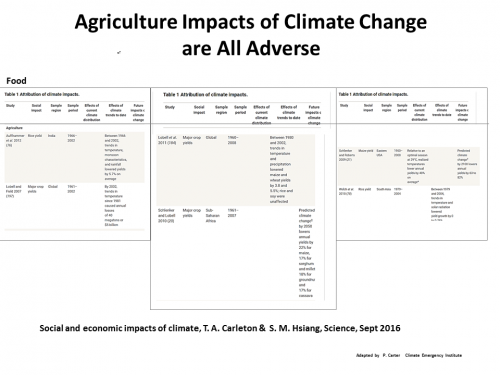
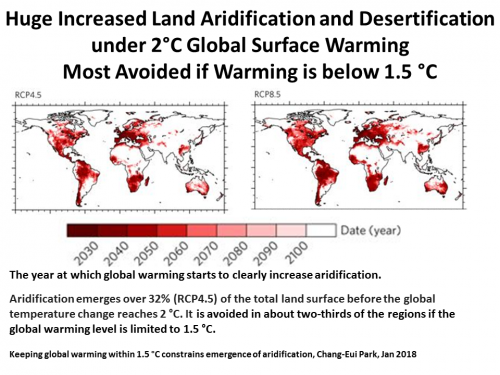

8 Mar 2021. Food systems are responsible for a third of global anthropogenic GHG emissions
UN, FAO, Nature Journal
UN, FAO, Nature Journal
8 April 2021, Study calls for urgent climate change action to secure global food supply
Word doc of Multiple adverse impacts in above review paper.
Word doc of Multiple adverse impacts in above review paper.
IMPORTANT RESEARCH, 2020 Maximum warming and related to crops
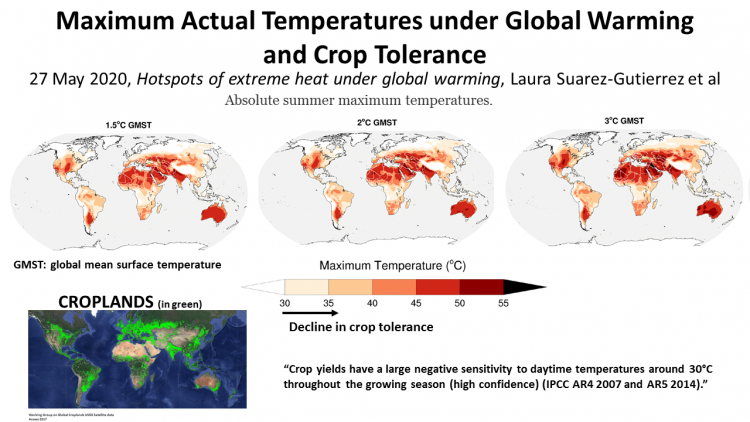
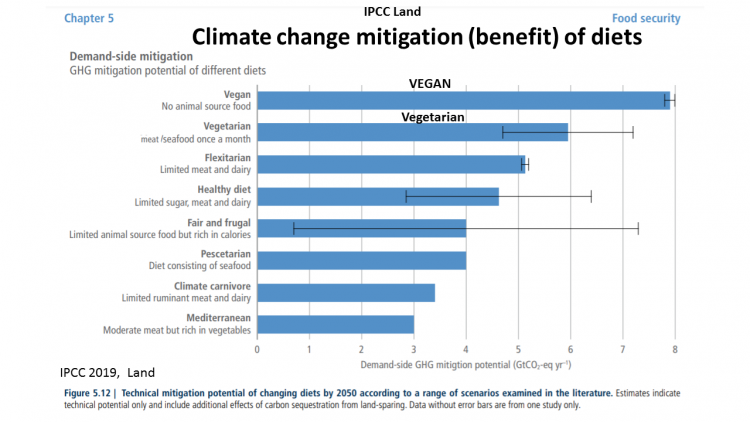
1 November 2021, Climate impacts on global agriculture emerge earlier in new generation of climate and crop models
1 Feb 2022 Phasing out animal agriculture could stabilize greenhouse gas levels for decades
Extreme weather is increasing, and is most damaging to populations and crops.
March 2023, M. Heino Increased probability of hot and dry weather extremes during the growing season threatens global crop yields
March 2023, M. Heino Increased probability of hot and dry weather extremes during the growing season threatens global crop yields
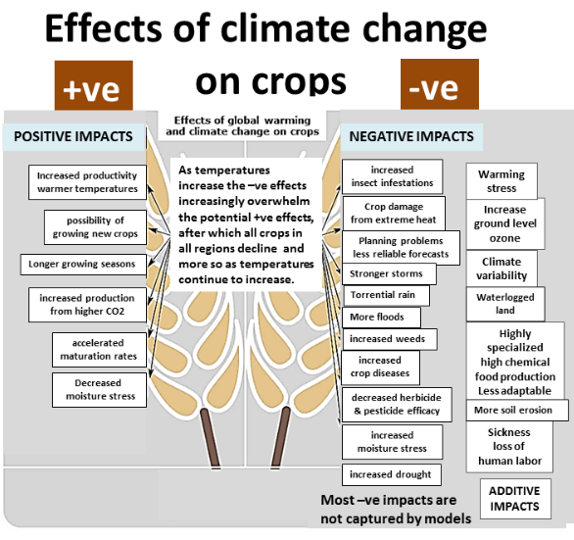
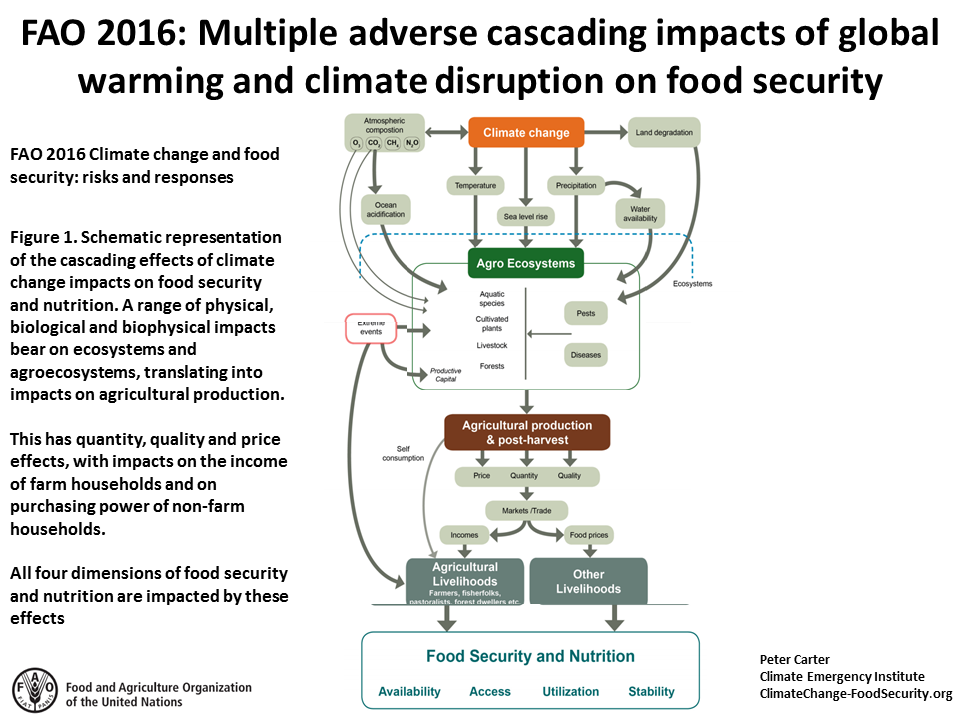
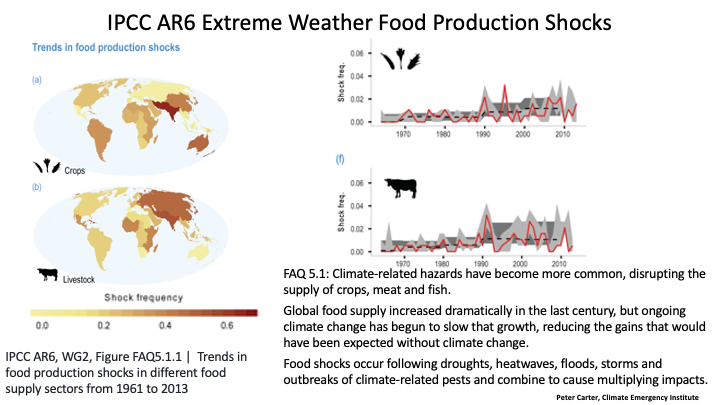
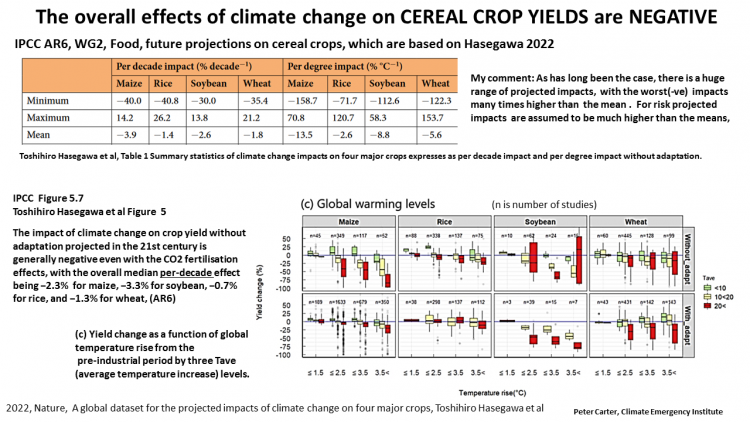
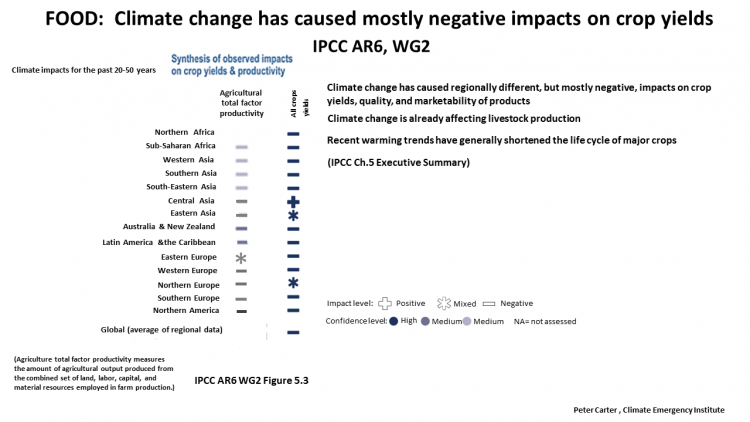
Top food producers:
1. China 2. USA 3. Brazil
1. China 2. USA 3. Brazil
IPCC AR6 Fact sheet - Food and Water
Climate Change Impacts and Risks
Climate change impacts are negatively affecting agriculture, forestry, fisheries and aquaculture, increasingly hindering efforts to meet human needs.
Human-induced global warming has slowed growth of agricultural productivity over the past 50 years.
Warming is negatively affecting crop and grassland quality and harvest stability.
Ocean acidification and warming have already affected farmed aquatic species.
Climate-related extremes have affected the
Climate change impacts are negatively affecting agriculture, forestry, fisheries and aquaculture, increasingly hindering efforts to meet human needs.
Human-induced global warming has slowed growth of agricultural productivity over the past 50 years.
Warming is negatively affecting crop and grassland quality and harvest stability.
Ocean acidification and warming have already affected farmed aquatic species.
Climate-related extremes have affected the
productivity of all agricultural and fishery
sectors, with negative consequences for food
security and livelihoods (high confidence).
The frequency of sudden food production losses has increased since at least mid-20th century on land and sea.
The frequency of sudden food production losses has increased since at least mid-20th century on land and sea.
Drought and flood risks and societal damages are projected to increase with every degree of global warming. Over
Drought and flood risks and societal damages are projected to increase with every degree of global warming. Over
large areas of northern South America, the Mediterranean, western China and high latitudes in North America and Eurasia, extreme agricultural droughts are projected to be at least twice as likely at 1.5°C global warming, 150 to 200% more likely at 2°C warming
Malnutrition
Climate change has contributed to malnutrition in all its forms in many regions, including undernutrition, especially for
Malnutrition
Climate change has contributed to malnutrition in all its forms in many regions, including undernutrition, especially for
women, pregnant women, children, low-income households, Indigenous Peoples, minority groups and small-scale producers. Extreme climate events have been key drivers
in rising undernutrition of millions of people, primarily in Africa and Central America
Climate impacts on food systems are projected to increase undernutrition and diet-related mortality and risks globally. Reduced marine and freshwater fisheries catch potential is projected to increase malnutrition in East, West and Central Africa
(IPCC AR6)
Climate impacts on food systems are projected to increase undernutrition and diet-related mortality and risks globally. Reduced marine and freshwater fisheries catch potential is projected to increase malnutrition in East, West and Central Africa
(IPCC AR6)
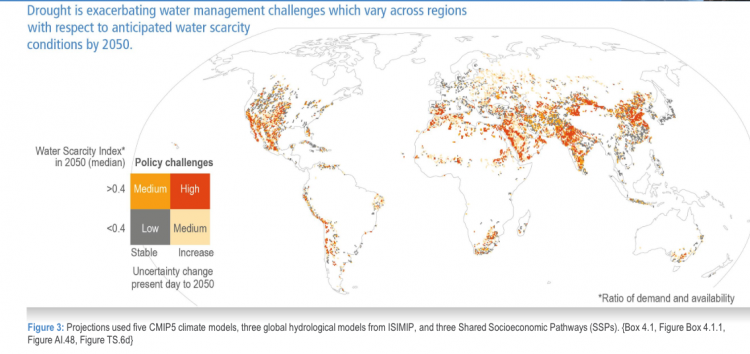
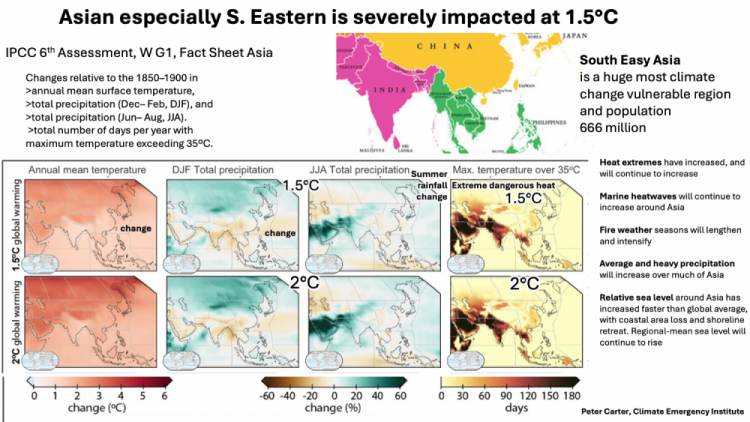
Drought
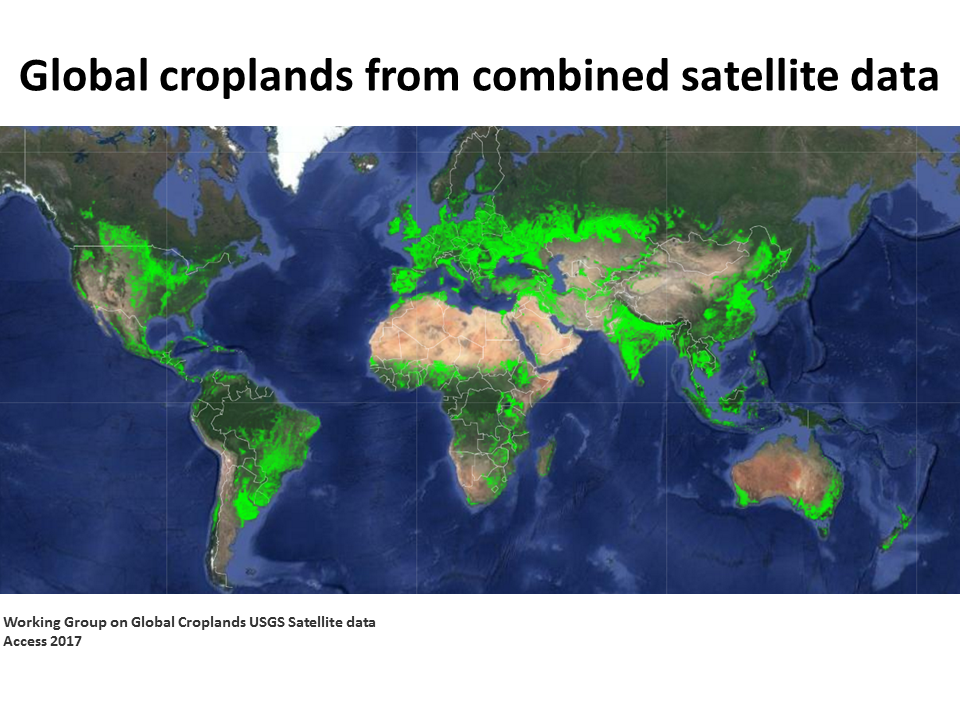
The long standing increase in world food productivity has slowed due to climate change (IPCC AR6)
Extreme weather events have reduced crop yields (temporarily) in all producing regions.
African and lower latitude regions have suffered most food production decline.
Yields will decline in all food producing regions as maximum daily temperatures, heat waves, drought, heavy rains and floods increase under global warming- all affecting all food producing regions
Extreme weather events have reduced crop yields (temporarily) in all producing regions.
African and lower latitude regions have suffered most food production decline.
Yields will decline in all food producing regions as maximum daily temperatures, heat waves, drought, heavy rains and floods increase under global warming- all affecting all food producing regions

India
China

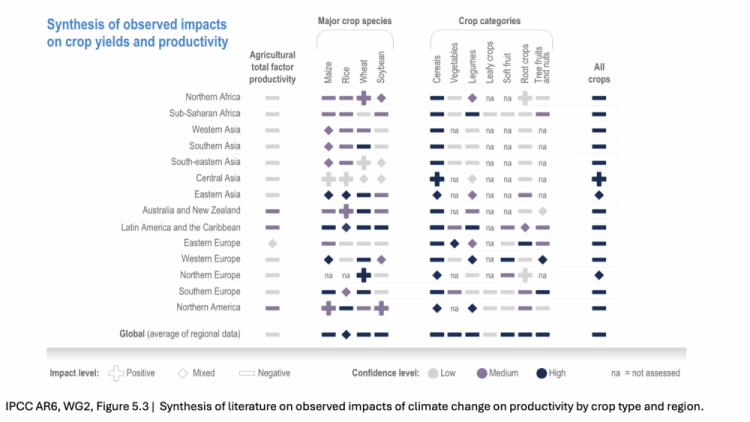

IPCC AR6 Fish
Ocean warming has decreased sustainable yields of some wild fish populations
Ocean warming has decreased sustainable yields of some wild fish populations
Ocean acidification and warming have already affected farmed aquatic species
IPCC 6th Asessment
Overall negative impacts
All extreme weather events adversely affect agricultural crops

